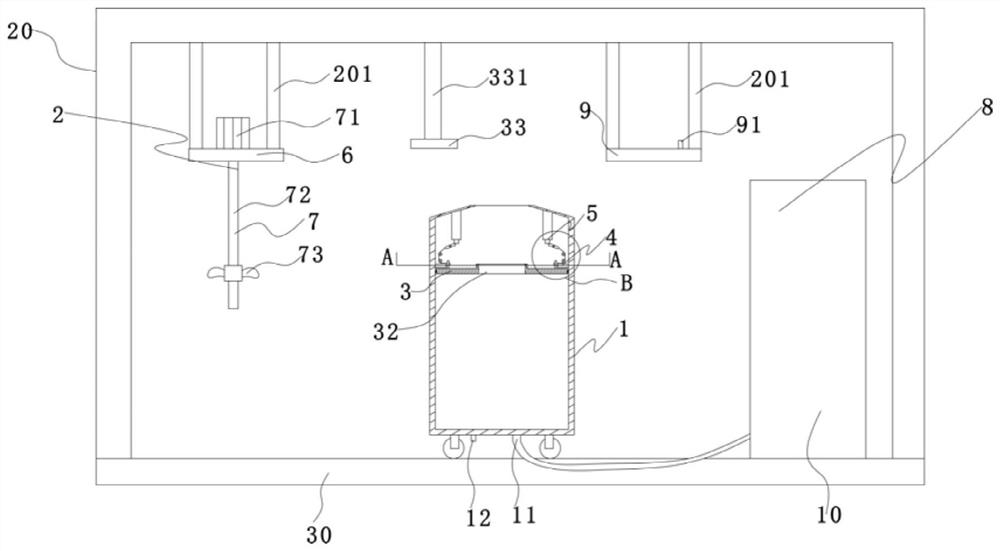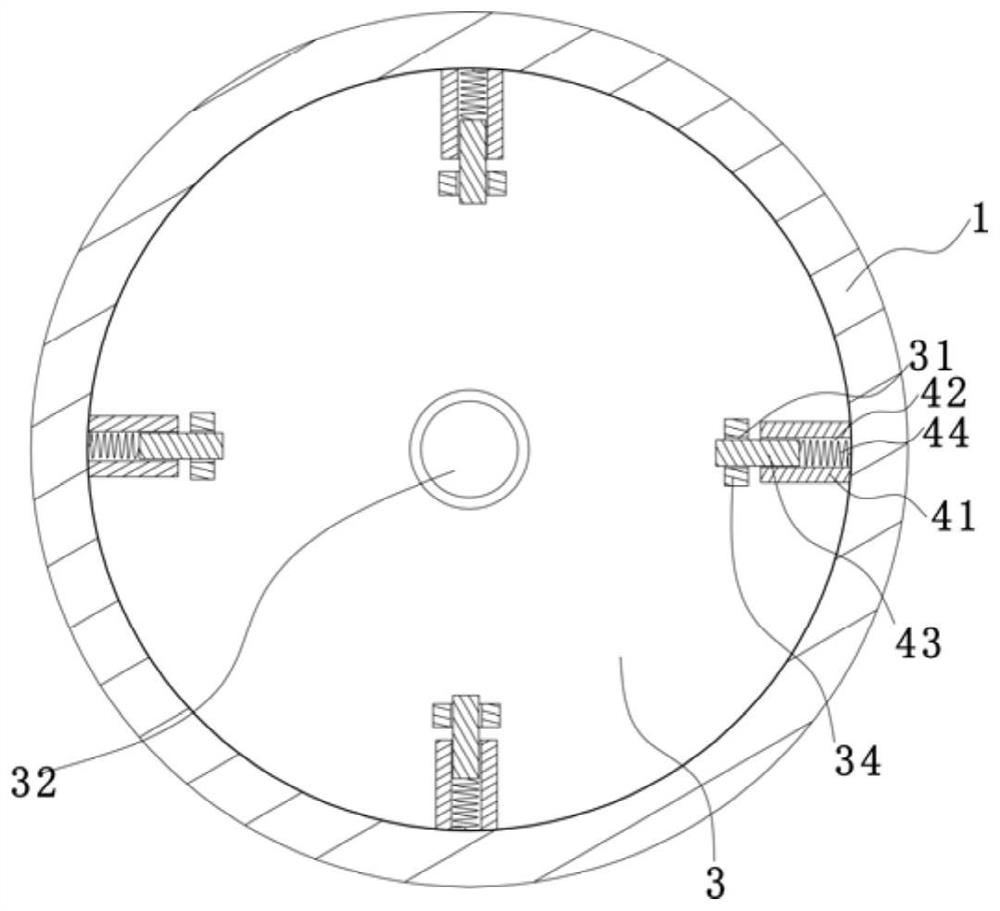a color changing lipstick
A lipstick and natural pigment technology, applied in the field of color-changing lipsticks, can solve problems such as weak resistance to breaking, easy softening, and lipstick breakage
- Summary
- Abstract
- Description
- Claims
- Application Information
AI Technical Summary
Problems solved by technology
Method used
Image
Examples
Embodiment 1
[0030] A color-changing lipstick whose components and parts by weight ratio are: 40.5 parts of isooctyl palmitate, 28 parts of cosmetic-grade white oil, 25 parts of isostearyl alcohol, 2 parts of dibutyl ethylhexanoyl glutamine, 2 parts of hydroxystearic acid, 0.5 part of dibutyl lauroyl glutamine, 0.5 part of phenoxyethanol, 1 part of natural pigment, and 0.5 part of flavor. Specifically, the natural pigment is carotene and the flavor is osmanthus essential oil .
[0031] The preparation method for preparing the above-mentioned color-changing lipstick includes the following steps: S1: Mixing natural pigment and isooctyl palmitate evenly and grinding to obtain pigment powder; S2: Combining cosmetic grade white oil, isostearyl alcohol, and dibutyl ethyl Mix hexanoyl glutamine, hydroxystearic acid and dibutyl lauroyl glutamine, heat and stir until completely dissolved, then add the pigment powder obtained in step S1 and stir, then add phenoxyethanol and flavor, mix and stir to obta...
Embodiment 2
[0043] A color-changing lipstick whose components and parts by weight ratio are: 40.5 parts of isooctyl palmitate, 28 parts of cosmetic-grade white oil, 25 parts of isostearyl alcohol, 2 parts of dibutyl ethylhexanoyl glutamine, 2 parts of hydroxystearic acid, 0.5 part of dibutyl lauroyl glutamine, 0.5 part of phenoxyethanol, 1 part of natural pigment, and 0.5 part of flavor. Specifically, the natural pigment is carotene and the flavor is osmanthus essential oil .
[0044] The preparation method for preparing the color-changing lipstick with the above-mentioned raw material ratio includes the following steps: S1: mixing natural pigment and isooctyl palmitate uniformly, and grinding to obtain pigment powder; S2: mixing cosmetic grade white oil, isostearyl alcohol, two Mix butyl ethylhexanoyl glutamine, hydroxystearic acid and dibutyl lauroyl glutamine, heat and stir until completely dissolved, then add the pigment powder obtained in step S1 and stir, then add phenoxyethanol and fl...
Embodiment 3
[0051] A color-changing lipstick whose components and parts by weight ratio are: 40.5 parts of isooctyl palmitate, 28 parts of cosmetic-grade white oil, 25 parts of isostearyl alcohol, 2 parts of dibutyl ethylhexanoyl glutamine, 2 parts of hydroxystearic acid, 0.5 part of dibutyl lauroyl glutamine, 0.5 part of phenoxyethanol, 1 part of natural pigment, and 0.5 part of flavor. Specifically, the natural pigment is carotene and the flavor is osmanthus essential oil .
[0052] The preparation method for preparing the color-changing lipstick with the above-mentioned raw material ratio includes the following steps: S1: mixing natural pigment and isooctyl palmitate uniformly, and grinding to obtain pigment powder; S2: mixing cosmetic grade white oil, isostearyl alcohol, two Mix butyl ethylhexanoyl glutamine, hydroxystearic acid and dibutyl lauroyl glutamine, heat and stir until completely dissolved, then add the pigment powder obtained in step S1 and stir, then add phenoxyethanol and fl...
PUM
| Property | Measurement | Unit |
|---|---|---|
| diameter | aaaaa | aaaaa |
Abstract
Description
Claims
Application Information
 Login to View More
Login to View More - R&D
- Intellectual Property
- Life Sciences
- Materials
- Tech Scout
- Unparalleled Data Quality
- Higher Quality Content
- 60% Fewer Hallucinations
Browse by: Latest US Patents, China's latest patents, Technical Efficacy Thesaurus, Application Domain, Technology Topic, Popular Technical Reports.
© 2025 PatSnap. All rights reserved.Legal|Privacy policy|Modern Slavery Act Transparency Statement|Sitemap|About US| Contact US: help@patsnap.com



